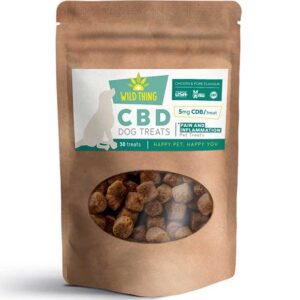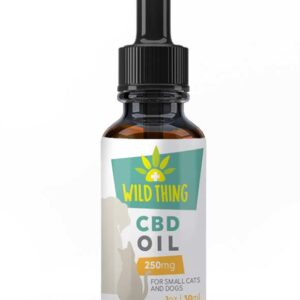Head, shoulders, floofs and paws. Have you ever been brushing your kitty and noticed a collection of tiny flakes on their fur? Maybe your special spazz seems to be perpetually itchy or easily irritated. While being “easily irritated” is a common trait with most felines, cat dandruff could easily be the root cause of the change in attitude or grooming. We’re pet parents and we want our fur babies to live the healthiest, most comfortable life they can. Being educated on ailments even as common as cat dandruff is important because in some cases, not all, the dandruff you’re noticing could be attributed to something more serious. In this article, we will explore the causes of cat dandruff, how it differs from cat dander, the symptoms and the treatment steps you can take to rectify the problem.
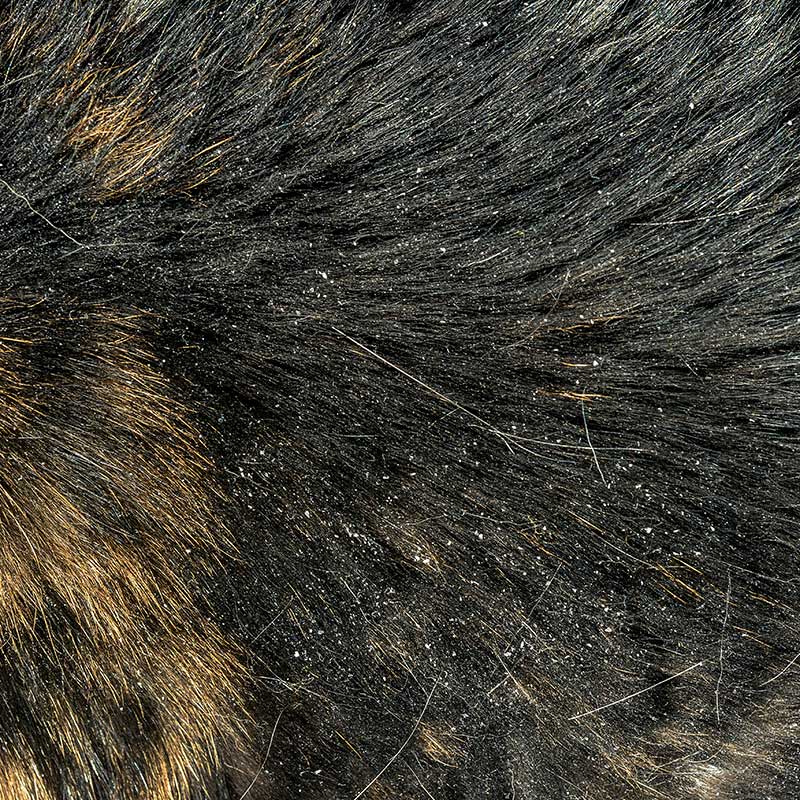
Cat Dandruff or Dander?
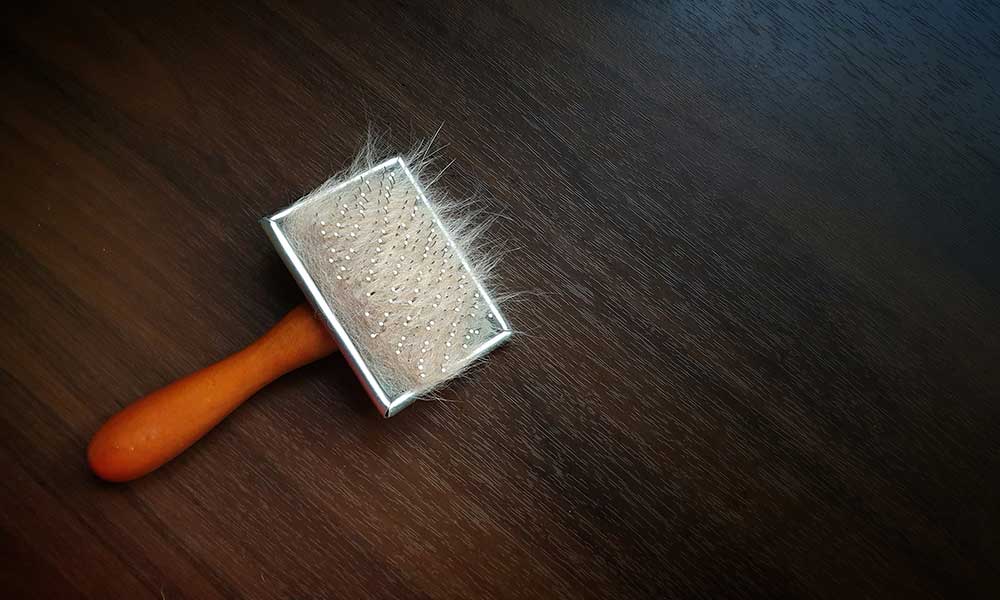
Isn’t that the question? To know the difference between the two, you have to first understand them both, individually. If you’ve ever had, or known someone who’s had, dandruff you would be able to recognize it relatively quickly. Dandruff is simply the explanation behind dry, dead, flaky skin that’s falling from your cat’s fur. Dandruff has nothing to do with the health of your cat’s fur, but more their skin. Dandruff can stem from many different causes, which we’ll explore later in this article, but it’s most often identified as flaky skin accompanied by irritated, itchy skin.
Cat dander, on the other hand, is a more common and natural occurrence that requires no treatment. It’s often that dandruff and dander are confused as they can look very similar to the naked eye. Both are caused by the normal flaking of dead skin off your cat’s body during the natural shedding process. Dander is also the key allergic to people who suffer from animal allergies. The main difference between the two is the irritation that accompanies dandruff as opposed to dander. Common dander will appear on your cat’s coat, similar to dandruff, but won’t irritate the skin or cause them to excessively groom or scratch the affected area. Dandruff will. If you’re unsure, the best course of action is always to schedule an appointment with your veterinarian so they can diagnose it and remove any questions or worries that you may have.
Causes and Symptoms of Cat Dandruff
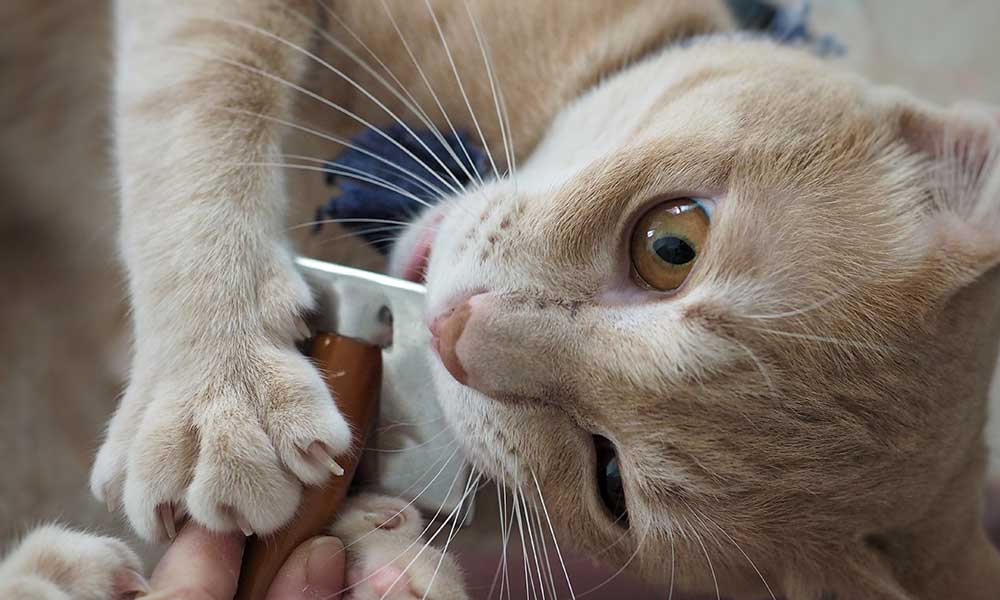
There are plenty of reasons for why your cat may be suffering from dandruff. Those reasons can be spread over 5 key areas: diet, parasites, hydration, health and allergies.
Diet
Just like us, a diet is imperative to maintaining a healthy and happy quality of life. A pet with a poor diet, or an overweight one, can be more susceptible to a plethora of ailments. Cat dandruff is no different. Not only does a proper diet maintain a healthy weight for your pets, but the nutrients that accompany it are essential to fending off other ailments that may try to infect your pets. The most common reason that your cat has dandruff is a lack of omega-3 oils. Omega-3s are a huge factor in maintaining healthy skin and fur. It can also reduce shedding, which may not stop dandruff, but will make your clothes and fabrics happy. So next time you’re asking yourself “why does my cat have dandruff”, it could very well be as simple a fix as putting them on a healthier diet.
Hydration
Just like a healthy diet, hydration is an important factor to maintaining a healthy pet. For years doctors have been telling humans to drink 8 glasses of water a day. Cat’s actually consist of 7% more water than humans so ensuring they get enough water should be one of the highest priorities as a pet owner. Especially if you live in a dry climate like Arizona, Nevada or California.
Parasites
Indoor cats likely don’t have to worry about this as much as an outdoor one, but parasites can be a leading cause of dandruff in cats. Parasites like worms, fleas, mites etc. can cause allergic reactions to trigger some type of dermatitis. The irritation from any of these catalysts can cause dry skin, rashes, blisters and more that can cause the dandruff your cat is experiencing. The symptoms of parasites can also lead to more serious conditions if left untreated. That’s why we recommend that visiting a vet should be priority if you suspect your cat may have dandruff.
Health
Dandruff with your kitty could also stem from underlying health issues that are yet to be diagnosed or are in the middle of treating. Diabetes and Hyperthyroidism can affect older cat and overweight cats more commonly than others. These diseases have shown, in some cases, to dry out skin and eventually lead to dandruff.
Allergies
Have you ever had an allergic reaction? Have you ever witnessed someone have an allergic reaction? Itchy, dry skin or hives usually accompany those episodes. Animals are exactly the same. Just like you, allergies can come from a laundry list of causes. It could be the food that they eat, the perfume or cologne that you wear or even the pollen that come with a change in seasons. Cats have always shown to be allergic to certain fabrics and plastic materials too. Scheduling a vet visit if you suspect allergies are the culprit should be of the highest priority as allergies can be life threatening if left undiagnosed.
Treatment
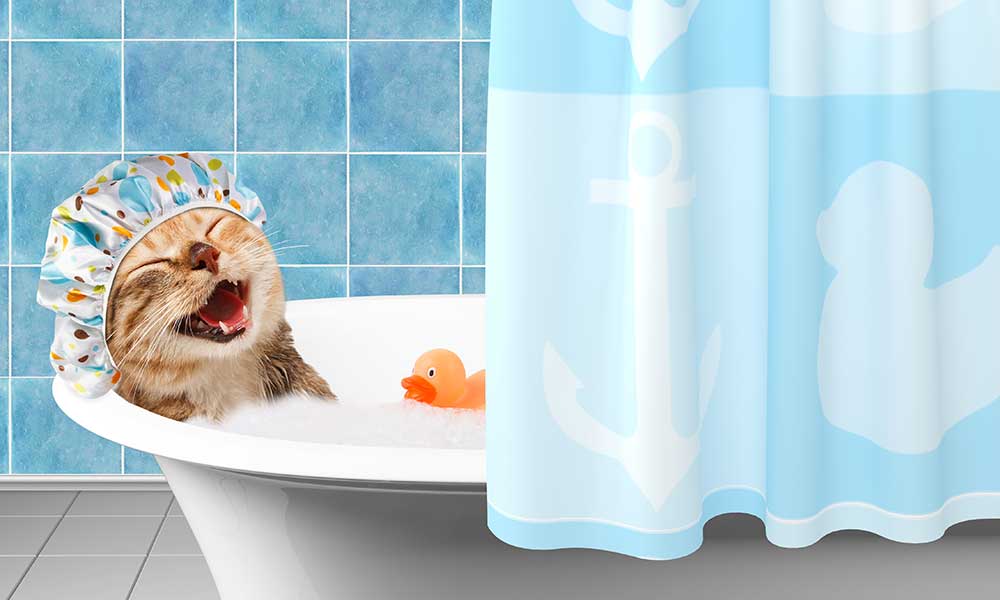
You have identified that your cat is showing signs of dandruff and not dander. You’ve talked to your vet and they have informed you that it’s not caused by any underlying health issues and now you have to treat it. Your vet will be riddled with information on what to do and how to do it, but there are just as many solutions to treating cat dandruff as there are causes.
Brushing
Sometimes the best solutions are the most simple ones. Cats shed. Their skin also has essential oils that give them a healthy, shiny coat. Brushing can help spread these oils evenly across their coat and also remove the excess hair and undercoat. While brushing can assist in the reduction of dandruff, scheduling a grooming appointment can boast better results.
Bathing
Just like brushing, bathing offers a solution to moisturizing your cat’s skin. Your cat may not be as open to the idea of a bath as you are, but it may be necessary to reduce the amount of dandruff over the course of a few months. While bathing is a great weapon in the fight against dandruff, over bathing your cat can offer negative results too. Have you ever sat in a bath or shower for too long? Pruny fingers and dry skin usually accompany too much time in the bath. The oils that form on your cat’s skin assist in the health of their skin and coat so over bathing and removing those oils can cause a result of more dandruff instead of less. It’s a fine line you have to walk. Indoor cats who regularly bathe themselves only require a bath once to twice a year, max. If you have a more active feline adventurer, a bath every 4-6 weeks is recommended.
Special Shampoos
While there isn’t a brand of Head & Shoulders for your pets, there are special shampoos that are specially formulated to treat your cat’s dandruff. Like any other product on the market, it’s hard to determine if one is better than another. Consider trying them on a case-by-case basis and monitoring your pet’s reaction to them. Just because the fruity smell is pleasant to your nose, doesn’t mean your cat is enjoying themselves.
Oils
Omega-3s, coconut oil, olive oils and more can be a surefire way to improve the health of your cat’s health when trying to treat their dandruff. Oils promote healthy skin and a healthy coat and can bring back that shine they had as kittens. Simply find out which oils are safe to use for your cat and add a little to their food. The fatty acids that come with the oils will boost the skin health and could be an inexpensive way to treat cat dandruff without breaking the bank.
Conclusion

Of all the ailments that your pets can suffer from, dandruff is on the lighter side of the spectrum. Although, knowing what type of dandruff is the most important part of treatment. Dandruff itself is just one symptom of a host of possible causes. Knowing which cause is the first step. If your pet has dandruff it’s not a reason to panic. Your first steps with any concern you have with the well being of your pet should be to schedule a visit to the vet immediately. Once you have confirmed that it’s dandruff and not dander, you can discover the cause and then move onto treating your Cat. Dandruff itself is not life threatening, but the other causes can be. That’s why detection, understanding and diagnosis are key.
Frequently Asked Questions (FAQ)
Why does my cat have dandruff on their back?
If your cat has flakes of what appears to be dandruff on their back, it could actually be dander. Dander and dandruff are often confused with one another.
How do you get rid of dandruff on a cat?
There are many ways to rid your cat of dandruff. Bathing, special shampoos, a healthy diet or daily brushing can all help to remove dandruff or keep it away after it has been resolved.
How can I treat my cat’s dandruff at home?
Treating your cat’s dandruff at home is simple and, usually, the recommended way to treat the affliction. Regular bathing, specialty shampoos and a healthy diet are the most common ways to treat your cat’s dandruff.
What is the difference between cat dander and dandruff?
Cat dandruff and dander are often confused for one another as they present themselves in similar ways. The difference is that dandruff is caused due to skin irritation where the skin flakes from cat dander are part of the natural shedding process. If you notice tiny flakes on top of your cat’s fur, but it doesn’t cause them any discomfort or itching then that is a common sign of dander.
Want to Learn More?
Download our AILMENT GUIDE NOW.
PLUS! all FIRST TIME buyers get 50% off their additional order. Visit verlota.com to get your discount code.


